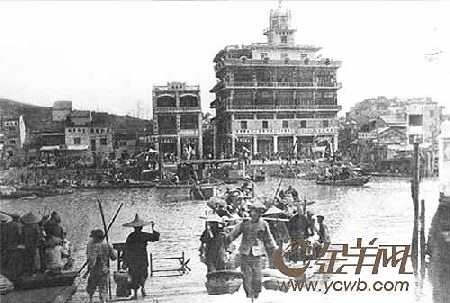Guangzhou history

This page is Guangzhou history for Guangzhou travel. A township has existed on the site of Guangzhou since the Zhou dynasty, around 860 BC. The legend of the founding of the city is as follows. There had been a great flood, after which out of the sky appeared five sages mountedo7 five goats, each goat carrying a stalk of rice in its mouth. The people were enjoined to live in peace and prosperity and the rice was presented to them.
Thereafter they would have the means to plant rice; the water subsided and the sages disappeared. The goats turned to stone and were for many years revered in the Temple of the Five Sages, one of the many temples in Guangzhou which now no longer exist. In the ig5os a larger-than-life model in a modern, realistic style of the five goats was made and now stands in Yuexiu Park. They are popular photographic subjects for Chinese families and their children. Guangzhou is sometimes even today referred to as Goat City, Five Goat City or Rice Grain City.
During the Three Kingdoms period, in the third century AD, the city was designated Guangzhou by the kingdom of Wu, and by the Tang dynasty it had become a truly international port with trade connections as far west as Persia and even Europe. Xiangyang xi lu was largely inhabited by foreigners, and the mosque probably dates from that period.
The Portuguese began trading in the sixteenth century, to be followed by the British a century later, and it was under the Qing emperor Qian long that all foreign trade was restricted to Guangzhou, controlled by the powerful merchant guild known as the cohong. The sorry story of the introduction of opium into China began here and Lin Zexu was the Chinese hero who succeeded in capturing the British supplies and burning them, after blockading the British quarter for a week. The anti-British up-rising of 1841 is commemorated in a monument in the northern quarter of the town, in Sanyuanli. These events led to the Opium Wars and the eventual opening of the five treaty ports, taking away some of Guangzhou’s monopoly.
Guangzhou remained one of the cities most open and susceptible to new ideas.Sun Yatsen and the Tongmeng hui (United League) plotted to overthrow the Manchu dynasty, leading to the uprising of April 1911. A memorial to the martyrs of this uprising can be found in the north-east corner of the city at Huanghuagang. Chairman Mao and the Communist Party played their part when they came to Guangzhou and taught in the Peasants’ Military Academy. In July 1926 the northern expedition against the warlords set out from here. In 1925 there was a general strike of seamen and dock workers lasting sixteen months. The following year saw an uprising against Chiang Kai-shek’s anti-Communist programme.

